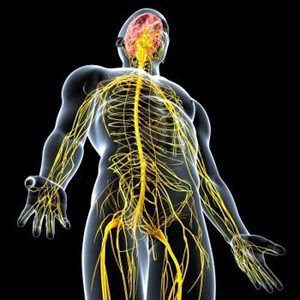Train Smarter, Not Harder…

Physical skill development in any sport occurs faster and more effectively using the periodization techniques that have dominated competitive sports training for the past half century. We see college athletes routinely make weight, speed, power, and time achievements that were unthinkable at even the most elite competitive levels 50 years ago. Taking the time to break those skills down into an effective program is not insurmountable, but it takes time, patience and a fair amount of trial and error . We have chosen to focus on four principles of periodization relevant to shooting specific skills. These phases are adaptation, conditioning, transition, and refinement.
The adaptation phase is characterized by the establishment or reprogramming of existing neuromuscular pathways. This is simply teaching your muscles and tendons to stabilize the muzzle while you perform all the other necessary actions to hit your target. The key to adaptation is to remember that practice does not make perfect; practice makes permanent. During the adaptation phase, we are not concerned with speed, we are exclusively focused on getting the movements absolutely correct. This is all about establishing an efficient neuromuscular pathway. Most people can build enough of a base in about 90 days to begin effective training if they focus on it – but this is the permanent base from which your skills will develop. Mistakes made in the adaptation phase will prove costly in time and effort.

The transition period is a programmed rest phase which allows both the body and mind to take a break. It also allows your normal coordinated movement to start incorporating the improvements in the shooting specific neuromuscular pathways. Basically, as your grip strength improves, it will take a bit of time to adjust to the correct amount of pressure needed to open a jar of pickles. Incorporating these gains into your everyday life helps improve the pathway and makes it more efficient, as well as giving you finer motor control over the neuromuscular systems involved. This makes it easier to incorporate these improvements into other shooting relevant skills during the refinement phase.
The refinement phase consists of incorporating the improvements in the programed pathway into the other skill sets required to shoot effectively. This means we are focusing on a new skill set (or functional area), which typically still requires the effective use of the previously programmed pathways and serves as a maintenance program. This is the key to long-term improvement — consciously improving one specific area at a time, and over time incorporating each segmented improvement to the whole of the activity. As should be evident from the above description, this does not happen in a four hour class. Like anything else you want to master, shooting takes time an effort to get good at.
The physiological underpinnings of periodization provide the general framework for improving physical skill development. The next step is in breaking down the critical functional elements required to accomplish the skill effectively. This puzzle can be solved in many different ways, but once you understand the key elements and know what the end goal looks like, your much further along the path then when you first dumped the pieces on the table. These specific skill development requirements are called functional areas. Since we are focused on self-defense and the ability to respond effectively over the long term, not peaking for a specific known event, this provides some challenges in programming. We break shooting in to five functional areas; trigger control, focal plane shift, gross motor skills, manipulation and incapacitation. The adaptation phase is typically started during professional instruction and mastered via specific follow on drills designed to reinforce the lessons learned. They are focused on for a period of time each training season (For our purposes a calendar year) and refined during the conditioning phase of improving the other functional areas.
For our program, the length of time dedicated to each functional area was determined by its relative value to your overall shooting ability. This is combined with the likelihood of having to execute the skills in a defensive scenario. For example a picture perfect one-handed type three-malfunction clearance is somewhat of an unlikely requirement and a relatively useless skill if you do not have effective trigger control mastered. Ultimately we dedicate more time and effort to the trigger control functional area then we do to the incapacitation functional area.
Nearly every decent instructor on the planet has a series of drills and secret sauce they use to get people on target and make them faster. It’s the reason I go shoot at other institutions and take other peoples’ courses every year. The question I have seen few instructors, even the great ones, able to answer is what aspect of shooting specific physical skills that specific drill is designed to improve. It might be the perfect solution to a problem you are experiencing. Without the ability to incorporate that skill into a program of skill development, it is simply an unending litany of error and solution identification until every possible error has been eliminated. Unfortunately that is a costly and inefficient means of skill development.
 Learning to drive by having an instructor point out potholes in the road is a great analogy for that type of training. If you were only told where the potholes were, you would eventually learn to vary the speed, direction, and location of the vehicle to avoid them. Conversely, If you were programatically taught how to turn the wheel, use the gas pedal and position the car correctly in the lane, you would learn to avoid potholes much more quickly. The key thing to evaluate is the goals of the program by looking at how the concepts presented relate to the drills being shot, what specific portion of a complete program does this drill work on, and what is the final goal of following the program. If that is not laid out, to some extent, you are quite likely wasting your time and effort…
Learning to drive by having an instructor point out potholes in the road is a great analogy for that type of training. If you were only told where the potholes were, you would eventually learn to vary the speed, direction, and location of the vehicle to avoid them. Conversely, If you were programatically taught how to turn the wheel, use the gas pedal and position the car correctly in the lane, you would learn to avoid potholes much more quickly. The key thing to evaluate is the goals of the program by looking at how the concepts presented relate to the drills being shot, what specific portion of a complete program does this drill work on, and what is the final goal of following the program. If that is not laid out, to some extent, you are quite likely wasting your time and effort…Programming and periodization is what people really mean when they say “train smarter, not harder”. As with any program, compliance is always the shortfall. Train smarter does not mean sit around and think about training (although visualization can be useful, that is a different concept). It means pick up the gun and do the work to master the skill. All of our courses come with a 30 day series of specifically programmed dry practice and live fire drills to ensure you are mastering the skills the paid to learn. For those who have completed the series of courses, we’ve tried to make it easy and broken it down into daily 5 – 10 minute user friendly dry practice drills with weekly live fires and situational awareness drills to keep you sharp. Check out the Drill of the Day for our programmatic approach to long term shooting specific skill maintenance. It’s free, it’s easy and it works – provided you understand how to practice correctly… If you don’t know what you’re doing, its counter- productive at best, and dangerous at worst. Get some professional instruction from someone who can explain the training progression, and how these drills and others fit into the program. Professional instruction (in any skill based activity) is the best money you’ll ever spend!
Author - Patrick Henry (President at Aegis Academy)
Patrick Henry received his operational training and experience from the U. S. Government, 22 years of which were spent in the Marine Corps where he served in the Reconnaissance, Infantry and Intelligence fields. During his active service, he spent more then five years deployed overseas in combat, operational and training assignments. After the military, Pat worked as a contractor and as the Director of Operations at a private paramilitary firm specializing in training military special operations forces and providing protective services to select private clients. His education consists of an MBA from the University of Southern California (USC), and a BS from San Diego State University with an emphasis in Biochemistry, Cell and Molecular Biology and a minor in Psychology. He holds an extensive list of security and training related certifications from a variety of government and nationally recognized entities. He currently sits on the advisory committee at USC’s Master of Veterans Business Program, and is an active member of Infraguard and the American Society of Industrial Security (ASIS). He has been a guest speaker at ASIS, the San Diego Industrial Security Awareness Council and other private organizations on physical security, travel security, and competitive intelligence collection counter-measures.
Source : http://aegisacademy.com/community/shooting-specific-physical-skills/

No comments:
Post a Comment